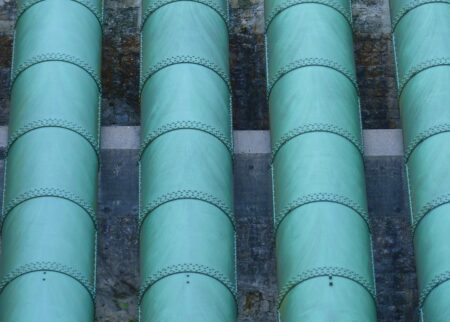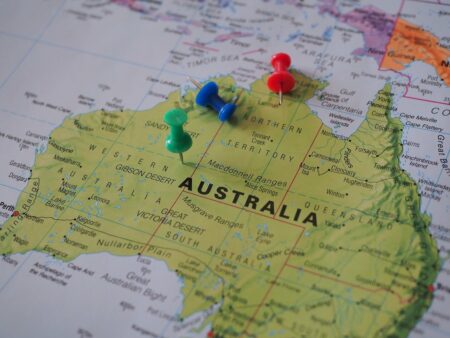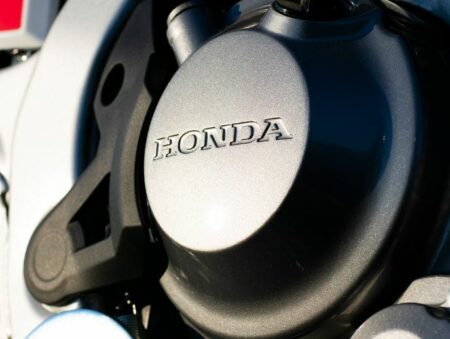20 Australian high-school teams are constructing fuel-cell cars for the Hydrogen Grand Prix.
In April, their remote-controlled vehicles will rumble for four hours in Gladstone, a Queensland port city. They’ve been investigating renewable energy, hydrogen power, and electric vehicles. Utilize a 30-watt fuel cell and 14 grams of hydrogen gas.
A few months later and 800 kilometers up Queensland’s coast, Grand Prix corporate cosponsor Ark Energy plans to use the identical hydrogen and fuel-cell components—scaled up more than 3,500 times. Ark plans five of the world’s largest fuel-cell trucks to transport concentrated zinc ore and completed ingots from a zinc refinery to Townsville by 2023’s third quarter. The refinery’s solar power facility will generate 50 kilos of hydrogen from water for the carbon-free rigs.
Australia has a green-hydrogen boom. The huge and toy-size cars aim to persuade Australians that green hydrogen—hydrogen gas made from renewable energy—can decarbonize their fossil-fuel economy. In 2021, coal plants provided over half of Australia’s power, but that’s changing. Last year’s administration passed the first climate-action law in over a decade. Green hydrogen drives its clean-economy growth plan. Resource-poor Asian countries like Japan and Korea are also banking on Aussie green hydrogen to move them off fossil fuels in the decades ahead. All of Australia’s green hydrogen projects exceed power-generating capacity.
Australian phantom projects are not unique. According to a September 2022 McKinsey & Company analysis, only 10% of the US $240 billion hydrogen projects proposed worldwide are proceeding. Many more are needed. According to the International Energy Agency in Paris, building all 2030 electrolyzers would produce only one-sixth of the green hydrogen needed to satisfy climate commitments.
Queensland is home to the two projects most likely to strengthen Australia’s green-hydrogen juggernaut’s credibility in 2023 amid this noise. Ark Energy’s initiative is part of Korea Zinc’s Australian clean-energy push. A Gladstone initiative to develop one of the world’s largest electrolyzer-manufacturing factories guarantees a local supply of equipment despite global supply chain instability.
Korea Zinc’s Townsville refinery’s 124-megawatt solar facility, completed in 2018, reduced its coal-heavy grid electricity by 25%. Fuel-cell trucks will reduce diesel use.
Ark Energy CEO Daniel Kim says Korea Zinc founded his company in 2021 to help its Australian operations reach 80 percent renewable energy by 2030 and 100 percent by 2050. Because Korea Zinc refines mostly in South Korea, where solar and wind plants are scarce, Kim argues the 2050 target requires green hydrogen or a more exportable fuel generated from it.
Ark purchased a 923-MW Australian wind farm in 2024 to increase its renewable electricity supply. To begin researching green hydrogen’s capabilities and challenges, it ordered Townsville truck project equipment.
Townsville refinery operates 28 heavy-duty diesel trucks. The rigs transport triple-trailers from port to plant and return for eight days when ships arrive with zinc concentrate or zinc ingots. Kim said time equals money because port berths cost AUS $22,000 (US $13,800) per day. Kim says his company couldn’t wait for battery recharges even if a battery-powered truck could manage the refinery’s 140,000-tonne loads.
Ark Energy invested in fuel cell ultraheavy truck maker Hyzon Motors in 2021. Hyzon, based in Rochester, N.Y., agreed to outfit some of its first extra-beefy fuel-cell rigs with the right-hand drive and wider carriage required in Australia—something other companies couldn’t deliver until 2025 or 2026. “We’re accelerating Australia’s ultraheavy transport industry transition by several years,” says Kim.
Ark Energy ordered a 1-MW electrolyzer from Latham, N.Y.-based Plug Power to power the trucks. Kim predicted that the electrolyzer facility would be built by the end of 2022 and that five fuel-cell trucks will loop to port and back on hydrogen gas by the third quarter of 2023.
Kim said these vehicles will cost “a little over three times” a diesel-fueled carrier up front, but the initiative should break even or save money over the trucks’ 10-year lifespan. High diesel prices and government assistance make hydrogen competitive. The trucks’ flat loop allowed for a smaller, cheaper fuel cell.
Hydrogen exports
Ark Energy anticipates exporting renewable energy in 2030. The team giving Queensland’s second dose of green hydrogen realism this year could start commercial exports in 2025. The first brick-and-mortar green-hydrogen project by mining billionaire Andrew Forrest, Australia’s boldest and wealthiest green-hydrogen proponent, is the Gladstone electrolyzer plant.
Fortescue Metals Group, based in Perth, disrupted the worldwide iron-ore industry under Forrest’s leadership.
Fortescue is doing the same with green hydrogen. Forrest pledges to invest US $6.2 billion to manufacture 15 million tonnes of green hydrogen per year by 2030—50% more than the European Union needs to import to get off Russian energy and cut carbon emissions. 150GW of wind and solar generation—more than France’s total installed capacity—is needed. Fortescue’s emissions will drop to zero and it will save US $818 million.
Fortescue is building an electrolyzer plant despite a global surplus. BloombergNEF expects electrolyzer manufacturing capacity to exceed demand 10–15-fold this year. Fortescue’s need to decrease costs and ramp up green-hydrogen production makes that unimportant, Smith adds.
Smith expects to install one line’s robotic machines in the second quarter of 2023 in Gladstone’s 13,000-square-meter enclosure. He expects the plant to end the year as a “gigawatt-scale” electrolyzer factory, producing enough to use 1 GW of power. He expects a second line to quadruple production early in 2024.
Hydrogen shipping issues
Green hydrogen should help Fortescue reach net-zero carbon emissions by 2040. Like Ark Energy, its expansion plan expects exporting most of its green hydrogen to clean up heavy vehicles, industries, and power grids worldwide. First, they must ship it.
Hydrogen shipping is expensive. It has low volumetric energy density as a gas or liquid. Most of Australia’s projected green-hydrogen mega-producers expect to export energy by converting green hydrogen to ammonia, a chemical precursor for nitrogen fertilizers that ships worldwide. Hydrogen is used to make ammonia, usually from natural gas rather than electrolysis.
BloombergNEF calculated that Australian green hydrogen-produced ammonia might outcompete European natural gas-produced ammonia, and new projects are increasing. Ark Energy developed an industrial collaboration to use 3 GW of renewable power to produce “green ammonia” for Korea after 2030.
Fortescue is considering ways to boost ammonia exports in the long run. Due to rising natural-gas prices, it is considering renovating a 54-year-old Brisbane fertilizer factory. Fortescue and the facility owner are exploring 500 MW electrolyzers to restart the plant on green hydrogen in 2025.
Despite these ambitious intentions, BloombergNEF’s Tokyo hydrogen expert Martin Tengler questions if green-ammonia exports can meet people’s energy needs.
He notes that exporting ammonia to hydrogen for steel factories or fuel-cell vehicles demands a lot of energy because it doesn’t burn effectively.
Green ammonia could increase fossil-fuel use and delay climate action. To minimize emissions, Japanese and Korean power producers aim to burn green ammonia in coal-fired power plants.
BloombergNEF predicted in September that Japanese coal plants burning 50% green ammonia from Australia will cost US $136 per megawatt-hour in 2030, more than power from offshore wind and solar plants with battery storage. Thus, even if green hydrogen becomes a reality this year, much remains to be learned about its uses and applications.








